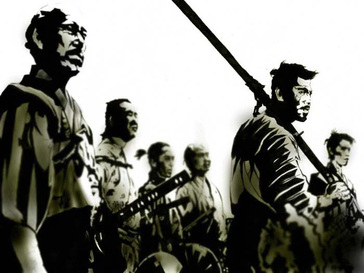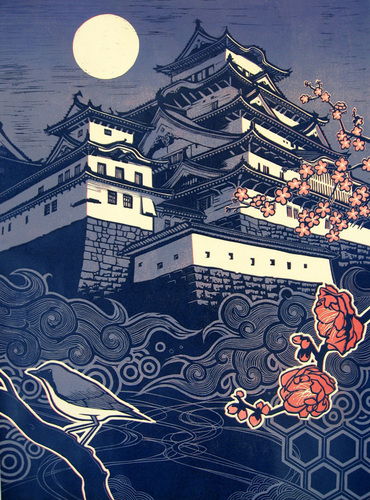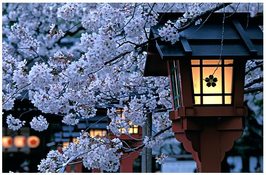 The Seven Samurai. Art by Tomasoverbai The Seven Samurai. Art by Tomasoverbai “What do samurai and cherry blossoms have in common?” asks my old friend Smokin’ Joe Matsumoto, the kitchener gardener who lives at the end of my street. It is not a question. He is offering me the tail end of a thread, inviting me to pull. I give it a yank, “Both live short, beautiful lives.” “Exactly,” he says. “You told me this story last year.” “What?” “I said you told me this last year!” “What’s wrong with your hair?” “Nevermind.” At 78, Smokin’ joe is the sage of the Good Hood, the traditional neighborhood in which I have lived for 15 years. If samurai lived like cherry blossoms, then Smokin’ has lived like a kusunoki (camphor tree), one of those ageless arbors which shade castle forecourts and shrine yards all over Japan, hearing all, seeing all. Kusunoki have medicinal qualities, too, and were once used to treat the septic sword wounds of the samurai. And yet, physically, Smokin Joe is no tall timber. He reminds me of the ronin (masterless samurai) leader in Akira Kurosawa’s seminal film Seven Samurai. He’s short and bandy-legged, has arms like vines and legs like tree stumps that'd probably take root if he spent any more time in his garden. But what he lacks in stature he makes up for in knowledge. This is the man who powers my blog when the Thought River runs dry. He gave last week’s post a boost with his two cents on cedar pollen and the seasonal wind, the Haru-ichiban, which disperses the damn stuff. From hay fever to cherry blossom fever, this week. The Good Hood readies itself for another season of partying in the pink, yeeeEEHAAAAA! Spring signifies new beginnings; school starts, the financial year too, a time for big companies to mince fresh recruit meat for their rank-and-file sausages. It is also when karoshi (death by overwork) reaches its peak as the senior sausages struggle to make deadlines, finalise accounts and receive their lucky dip job transfers to far-flung posts. Getting rip-roaring drunk, thus, is acceptable form of steam-letting. Hanami - cherry blossom viewing - is the perfect excuse. The cherry blossom, or sakura, remains an enduring symbol of Japan. From coins to kimonos, fingernails to footballs (Japan's national rugby team is called the Cherry Blossoms) the sakura motif gets blanket coverage for the next few weeks. Gangsters of Japan’s largest criminal organisation, the Yamaguchi mob (which incidentally originated in Himeji!) favour the sakura blossom tattoo. Or, at least used to. I have the feeling that old school is out and the young yaks are pressing their bosses for something more racy, more y’know, “groovy-daddy,” like a nude tattoo of P!nk. The tradition of Hanami dates back to the seventh century, when the blooming of cherry trees was considered an indicator of the coming rice harvests; full blooms would signify a bountiful crop and that would be cause for celebration. By the end of the 17th century the Hanami party had become popular across all social classes. Now, you’ll find bands of liquored truckies parking their picnic sheets between chain-smoking company bosses and their beery-breathed minions. Hanami is the great equalizer. Newspapers splash their weather maps with tiny pink dots to pinpoint the best hanami spots. Which is helpful to Japan's sakura otaku, “cherry blossoms maniacs," who are generally retired folk with money to burn and like to jet around the country chasing the party blow-by-blow, bloom-by-bloom. Me, I think I’ll bundle up a bento for Smokin’ Joe and myself and throw in a bottle of fancy sake, the stuff with the gold flakes in it, and head us down to the castle. It’s the least I can do for my old mate the kitchen gardener, a man who, even at 78, never seems to stop growing.
0 Comments
Leave a Reply. |
This Blog:What is the essence of a traditional Japanese neighbourhood? Writing from my home in Himeji, a castle town in western Honshu, Seaweed Salad Days distills, ferments, presents! Archives
March 2024
Categories
All
|


 RSS Feed
RSS Feed
